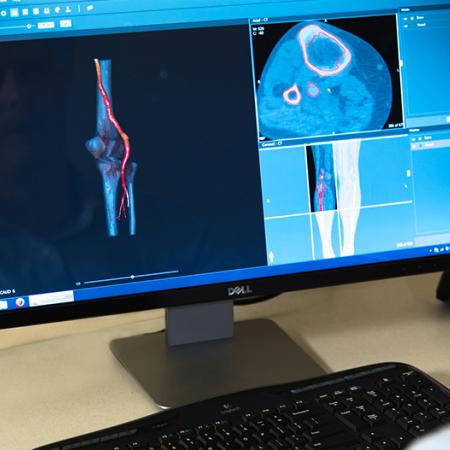Challenge
Dr. Vidal Barchilon, orthopedic specialist and head of the Department of the Shoulder Orthopedic at Meir Medical Center in Israel, was looking for a way to translate the 2D imaging of a CT scan into something tangible and concrete that both physicians and patients could better understand.
“The ability to hold the life-size 3D model enables me to better understand the structure of a fracture, plan an operation, and try to understand what the future limitations of the fracture may be,” said Dr. Barchilon.
"In addition, it allows me to make the patient more involved in his treatment when I explain this to him. My goal is to have him to understand what I am talking about. I can explain in medical terms but the patient may not understand anything.”
Dr. Barchilon was interested in a way to simply put the information of the patient’s CT scan into a computer and easily generate a patient-specific 3D model without the need for technical expertise.
Solution
Dr. Barchilon’s requirements were met with D2P® (DICOM to PRINT) software by 3D Systems.
Pre-Operative Planning
Dr. Barchilon said that patient-specific 3D models “takes me one step further in better understanding the structure of a fracture and planning a surgery." He adds: "Pre-operative planning“including the compatibility of plate and screw measurements can shorten the procedure a lot because you can make sure the parts you are going to use are bent in the correct way and the screws are of the correct size. During the procedure, you just need to go and take the plate chosen in advance off the shelf, place it, and insert the screws. It shortens the procedure time a lot.”
Helping Patients Understand Their Problems
"The 3D model allows the patient to understand what I am talking about,” said Dr. Barchilon. “I think it is very helpful to explain to the patient what he has and he can understand exactly if something needs to be done, whether it is an invasive operation or not, in a much better way than showing even the most advanced imaging like 3D resolution.”
His patient added: “Even though I looked at the CT, I didn’t understand it. I could see in the CT that the bone moved, but as to the how and why it has an effect this way or that way, the model gives a much clearer and precise picture.”
Outcome
"Now that 3D models can be made so easily and precisely with D2P and we see how they help both patients and physicians understand the pathology and be better prepared prior to the procedural intervention and course of treatment, we know that this will have great impact in improving patient care," says Dr. Barchilon.
“I would like to have the 3D-printed model for every patient and hope that, in the future, we will be able to add tissue with elasticity such as tendons and muscles,” said Dr. Barchilon. He added, “3D models allow us to better understand pathologies, whether or not an operation is required, what type of procedure and strategy should be followed, and then plan and prepare the procedure prior to performing it.”
